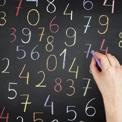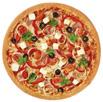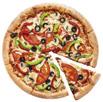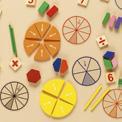Teacher’s Guide Andalusia
José Colera J. M.ª José Oliveira G. IgnacioGazteluA.
Ramón Colera C. Ana Aicardo B.
SECONDARY EDUCATION

LEARNING EXPERIENCES
NUMBERS FOR COUNTING, NUMBERS FOR MEASURING


NATURAL NUMBERS


Not everything that counts can be counted
Video. SDG 11: Sustainable cities and communities
Quiz. Previous knowledge
SELF-ASSESSMENT

Escape room


OTHER WAYS OF COUNTING
FRACTIONS AND DECIMALS WITH A CALCULATOR

• Transforming decimals into fractions DECIMAL NUMBERS


• Operations with integers INTEGERS

FRACTIONS
• Equivalent fractions
OPERATIONS WITH FRACTIONS
• Operations with fractions
• Simplifying fractions
• Comparing fractions


Numbers for counting, numbers for measuring
BASIC KNOWLEDGE
The basic knowledge we consider students should achieve is:
• Dexterous handling of natural numbers, integers and fractions: operation and use.
• Using basic counting techniques, such as tree diagrams, tables, and so on.
• Transforming fractions into decimals. Distinguishing between types of decimals.
• Expressing terminating decimals as fractions.
• Solving arithmetic problems using natural numbers, integers and fractions.
Opening video
anayaeducacion.es Watch the video ‘Not everything that counts can be counted’ about the learning experience.

SDG commitment
anayaeducacion.es Watch the video on the Sustainable Development Goal 11: Sustainable cities and communities.

Gamification
anayaeducacion.es Do the ‘Quiz. Previous knowledge’.
• Knowing the functions of the calculator and how to use it sensibly.
LEARNING EXPERIENCE
House is a home, but there's always something to be done. Many people spend time thinking about repairs, renovations and refurbishment. They need to think about the shapes, dimensions, costs, etc. Even if we only consider the floor of the house, we will find multiple possibilities of ways to efficiently and aesthetically cover it. The concept for the final activity is outlined: students will be asked to make estimates for tiling a room with different types of tiles.
This is followed by a series of specific questions using a related example. The students should work out answers to the questions using knowledge they already have.
‘The Learning Path’ identifies the key areas to be covered in the unit and related resources. Finally there is ‘My Maths Dictionary’. This section highlights key mathematical language and how to verbalise it, or includes vocabularly, phrasal verbs or prepositions commonly used in maths.
ANSWER KEY
1 a) and b) (16 + 1/5) × (10 + 1/3) = 81/5 × 31/3 tiles → 648 cm × 413.33 cm
c) Red tiles: 65/160 = 13/32 = 40.63 %
Yellow tiles: 34/160 = 17/80 = 21.25 %
d) → 11.58 m2; → 5.44 m2; → 5.44 m2; → 0.96 m2; → 0.32 m2; → 3.04 m2.
2 a) There are 12 squares with 1 side; 6 squares with 2 sides 2, and 2 squares with 3 sides. In total, there are 20 squares.
b) There are seventeen 2 × 1 rectangles; ten 3 × 1 rectangles; three 4 × 1 rectangles; seven 3 × 2 rectangles; two 4 × 2 rectangles, and one 4 × 3 rectangle. In total, there are fourty non-square rectangles.
MY MATHS DICTIONARY
Key language
Recurring Over
The answer is 781 " , seven point eight one recurring We can say 1/3 as ‘one over three’. 25/15 is 5/3 simplified / reduced / cancelled down.


1. N atural numbers
TEACHING NOTES
We begin by reviewing some basic aspects of natural numbers and their uses: counting, ordering, calculating, etc.
The following points should be emphasised:


Developing thinking
We recommend that for activity 2 on page 22, students apply the ‘Think and share with a partner’ technique.
MY MATHS DICTIONARY
Negative numbers
How do we say ‘–9’?
‘–9’ is pronounced as ‘minus 9’. It is not necessary to say ‘negative 9’ (students should understand by context that it is not the operation). However, in American English, it is common to say ‘negative 9’, ‘negative 10’, etcetera.


• Hierarchy of operations and use of brackets.
• Divisibility relationships. Calculation of the lowest common multiple and the greatest common divisor of several numbers.
• Immediate association of the calculation of the nth root with the corresponding power. As an example of the above, there are two problems solved on this page. In them we review different aspects of natural numbers:
• The first is a multiple-operation problem that provides an example of the process involved in working the problem out, as well as the solution. As a complementary activity, the search for a single expression that encompasses all the data and operations can be proposed.
• The second requires the students to recall the procedure for calculating the lowest common multiple combined with the use of logical processes.
ANSWER KEY
1 He has made a profit of €369 per calf.
2 €110.


2. Other ways of counting ( I )
TEACHING NOTES
In everyday life we encounter numerous situations in which we need to carry out nontrivial counts. For this reason, it is useful to have some simple strategies such as those proposed in the solved problems in this section. The aim is for students to reason slowly by understanding the statement and reflecting on the strategy they need to follow in each case:
problem 1: As a strategy, dividing the problem into parts and directly counting the cases occurring in each part is shown.
problem 2: A two-ways table is used to relate data and count all possible cases in an organised way.
2. Other ways of counting ( II )
TEACHING NOTES
problem 3: Counting the complementary data to the question (those who play - those who do not play) is used as a strategy.

problem 4: The tree diagram organises the data by highlighting all possible cases in an orderly fashion. In situations with more complicated counts (with more steps in sets of more elements), a complete construction of the diagram is usually not necessary. Outlining this generally uncovers the steps to be followed.



problem 5: It should be clear to students that the total number of elements of the set must be distributed among its different intersections with other sets.
problem 6: This systematic counting of squares and rectangles already started on the second page of the unit. The aim is for students to use logic and try to be orderly so that they do not miss any elements in their counting.
ANSWER KEY
1 They can be allocated in 6 · 5 · 4 = 120 different ways.
2 There are 10 ways to get from A to B. There are 5 ways to get from B to C. There are 50 ways to get from A to C via B.
3 There are 7 ways to distribute 6 tickets among 7 people. There are 28 ways to distribute 6 tickets among 8 people.
4 If there is only one round, 15 games. If the friends are A, B, C, D, E and F, the matches are the following:
AB AC AD AE AF
BC BD BE BF
CD CE CF DE DF EF
5 They must play 20 games. If the friends are A, B, C, D and E, the matches are:
AB AC AD AE
BA BC BD BE
CA CB CD CE
DA DB DC DE
EA EB EC ED
6 They can sit in 120 different ways.
7 They can sit in 48 different ways.
8 They can sit in 24 different ways.
9 1 275
10 Take Action. There are 16 squares of side 1; 9 of side 2; 4 of side 3; 1 of side 4; 5 of side 2 ; 1 of side 2 2 ; 8 of side 5 , and 2 of side 10 . In total, 46 squares.
11 Take Action. There are 24 rectangles measuring 2 × 1; 16 measuring 3 × 1; 8 measuring 4 × 1; 12 measuring 3 × 2; 6 measuring 4 × 2; 4 measuring 4 × 3; and 8 measuring 2 2 × 2 . In total there are 78 rectangles.
12 There are 19 people enrolled in Chinese.
3. Integers
TEACHING NOTES
Students are already familiar with negative numbers. To refresh their knowledge, they can be asked to express questions such as the following by addition or subtraction: The temperature dropped from five degrees Celsius to minus two degrees Celsius. How many degrees did it vary?
(–2) – (+5) = –2 – 5 = –7 oC
1-minute explanations
anayaeducacion.es Watch the video ‘Operations with integers’.

Enterprising culture
We provide a resource to help students to plan the necessary actions to make any initiative or project viable by properly analysing their weaknesses and strengths and the necessary resources.

1-minute explanations
anayaeducacion.es Watch the videos ‘Simplifying fractions’ and ‘Comparing fractions’.
Learning by doing anayaeducacion.es Watch the video ‘Equivalent fractions’.
MY MATHS DICTIONARY
Fractions
You can pronounce fractions in three ways. For example, 4 3 . You can say:
• ‘Three quarters’
• ‘Three over four’
• ‘Three divided by four’. The word over is a
casual way to say it.
And also to propose situations in other contexts that lead to similar calculations. Again, the use of the number line makes it possible to establish an order between numbers, as well as to calculate distances from a number to the origin. This will help students understand the meaning of the absolute value of a number: the length of the segment separating it from 0, regardless of whether the number is positive or negative. The solved and proposed exercises on page 26 will serve as a refresher on the rules for operating expressions with brackets and combined operations.
The solved problem on page 27 and the proposed problems below will serve to practise and show the usefulness of integers and their operations in real situations.
ANSWER KEY
1 –6 < –2 < 0 < |–4| < |–5| < 7 < 19
2 a) –10 b) 16 c) –646 d) 13 e) 59
3 a) –52 b) 48 c) –41 d) 17 e) 58 f) 0
4 22 minutes.
5 a) 66 oC b) 236 oC c) 396 oC d) 66 oC
6 A → 7 points; B → 16 points; C → –11 points
4 . Fractions
TEACHING NOTES
We review the concept of a fraction as a quotient of two integers, the result of which could be an integer or a fractional number, and its usefulness for expressing a measurement involving a divided unit.
The concepts of positive and negative fractions and integers expressed as fractions lead us on to the set of rational numbers, Q, and the expansion of the numerical field. It will be useful for students to see the approximate representation of fractional numbers on a number line. We suggest that they also consider the possibility of finding new fractional numbers between any two given numbers, no matter how close they are. We discuss comparing equivalent fractions, and the procedure of transforming them into irreducible fractions to demonstrate their equivalence. This will help students develop the habit of always giving their answer as an irreducible fraction, even when this is not asked for explicitly. We explain the concept of reducing to a common denominator in order to compare nonequivalent fractions, a method which has many other important applications. Students should be encouraged to use mental calculation here whenever possible (when dealing with equivalence, simplification, comparison, etc.).

5 . Operations with fractions
TEACHING NOTES
Students often reach this school year without an adequate understanding of operations with fractions, especially more complex operations requiring the application of the order of operations and the use of brackets.
For adding and subtracting, we remind students of the importance of using the lowest common denominator.
1-minute explanations anayaeducacion.es Watch the video ‘Operations with fractions’.
MY MATHS DICTIONARY
We use fractions in everyday speech, for example:
• We have to hurry! Our train leaves in a quarter of an hour.
After ‘one and a half’, the noun is plural:
• We had to drive for one and a half hours (or ‘an hour and a half’).
For multiplying and dividing, we suggest that students write out the multiplications to be performed with the numerator and the denominator, and that they try to simplify the common factors before calculating the products.
We introduce the calculation of a fraction of an amount, which involves dividing the total quantity by the denominator and multiplying it by the numerator. We then introduce the inverse process (calculating a total amount based on a part corresponding to a given fraction). Finally, this leads us to the concept of a fraction of another fraction, which is equivalent to the product of both fractions acting on a total amount.
These complementary concepts, together with the basic idea that the all the fractions of a whole add up to 1, will allow students to solve the exercises of varying difficulty.
1-minute explanations
anayaeducacion.es Watch the video ‘Transforming decimals into fractions’.
4 a) 1 788 865 b) – 1 72
5 He has gone 120 km.
6 Her total savings are €14 300.
7 Ruperta uses 1 225 litres to water her fruit trees.
6 . D ecimal numbers ( I )
TEACHING NOTES
We start by reminding students how to represent decimal numbers on the number line and how to get as close as possible to any point we want on the line using a decimal number. We do this by using smaller and smaller intervals, which, when expanded and divided into ten equal parts, give a new decimal figure.
We also remind students of the different types of decimal numbers and their notation. The calculator is a powerful instrument for investigating the transformation of fractions into decimals. Using the division keys, applying a constant factor and converting fractions into decimals, students will come to identify certain patterns in the solutions they obtain. It is important they take the way calculators round their answers into account to avoid confusion regarding recurring fractions.
Here are some examples:
• Ask students to divide the first ten natural numbers by 3, so that they learn the period for any fraction of the type a/3, given the relationship of a to the multiples of 3.
• Obtain the quotient of 1/9 and use it to describe the decimal expression of a/9 no matter what the value of a.
Working in analogue mode, students will learn which fractions give rise to terminating and recurring decimals, and that all of these are rational numbers.
The activities at the end of each page are useful for consolidating the concepts and procedures studied.
ANSWER KEY
1 3.52 → Terminating decimal.
. 28 ! → Pure recurring decimal.
154 # → Pure recurring decimal.
3 = 1.7320508… → Decimal that is not terminating or recurring.
2.7 → Terminating decimal.
3.5222… → Mixed recurring decimal.
π – 2 = 1.1415926… → Decimal that is not terminating or recurring.
2 .. .. 23 52 52 505005 25 … << < ! !
3 Open answer.
4 a) T b) T c) T d) T
5 a) Recurring b) Terminating c) Terminating d) Terminating
6 Open answer. For example: a) k = –12

6 . Decimal numbers ( II )
TEACHING NOTES
Students already know that rational numbers are numbers that can be represented by a fraction, and that these fractions correspond to an integer or a terminating or recurring decimal. In these pages we address the inverse problem, trying to find a fraction that corresponds to a terminating or recurring decimal number.
In the case of terminating decimals, we have to find an equivalent fraction whose denominator is a power of base 10 and then simplify it. This is a very simple process. The same cannot be said for recurring decimals, so here we explain the process in more detail to ensure students understand it. If students have the opportunity to apply the procedure to a sufficient number of examples, they will eventually learn to apply it automatically, while also understanding the concepts behind it.
It may help students to do some preliminary activities before studying the standard procedure, such as:
— Dividing the digits 1 to 9 by 9 and observing the period. This way we see that:
and
— Dividing the numbers 10 to 100 by 99 and observing the two-figure period. This demonstrates that:
— For mixed recurring decimals, we can use a similar method:
We recommend emphasising that this process is only applicable to terminating or recurring decimals, and reminding students that decimals with an infinite number of figures that are not recurring cannot be transformed into a fraction.
ANSWER KEY
= 166/33
=

MY MATHS DICTIONARY
When using calculators, use a full stop, not a comma, for the decimal point.
We should also provide the names for all the symbols:
Press the:
• Equals sign
• Multiplication sign
• Delete button
• Cube root button
• Alpha button
• Shift button
• Standard to decimal button
7 . Fractions and decimals with the calculator
TEACHING NOTES
If they have not done so already, this is the year when students should learn to use a calculator efficiently.
We use the CASIO CLASSWIZ as our calculator of reference, since surveys show it to be the most widely used model in Secondary education. In this double page we will introduce some of the basic functions of this model.
We describe some new functions for working with fractions and decimals, such as:
• Entering fractions with the key, which, together with the operations and brackets keys, allows us to view combined operations on the screen, such as the following:
• Entering recurring decimal numbers using the combination of these two keys . This allows us to view and perform combined operations with decimal numbers and fractions, for example:
• When introducing the basic functions of a calculator, we place special emphasis on the INPUT/OUTPUT settings. We recommend that in this unit students configure both input and output in mathematics mode so that they obtain their results in the form of a fraction. In this format, applying the � key to the result expresses it in the form of a decimal. This key is very useful for transforming decimals into fractions and vice versa. In other words, it calculates the original fraction instantly.
Deciding when it is appropriate to use calculators in class is of course a decision for teachers. Nevertheless, with this in mind, we strongly recommend that students try using calculators to check the solutions to exercises they have previously solved manually (or using mental arithmetic). This will be especially useful in helping familiarise students with their use.
ANSWER KEY

anayaeducacion.es Review the contents of this learning experience through the ‘My interactive visual summary’.
M y visual summary
TEACHING NOTES
The My visual summary section aims to summarise all the contents the students have studied throughout the learning experience.
Visual summaries are a useful teaching tool that facilitates the learning process in many ways:
• They provide students with non-linear visual ways to understand, produce and represent knowledge.
• They help students develop higher-order thinking skills including analytical skills.
• They facilitate organisation, recall and processing of information.
• They help students externalise their knowledge and show their understanding.
• They make explicit structural form of knowledge and relationships between concepts, and therefore enhance students' comprehension.
• They attend to different learning styles.
• They are effective organisational tools students can apply to organise their knowledge. Visual summaries can be used at the beginning and at the end of each learning experience. They are an excellent way to organise and make prior knowledge evident while setting a good bases for your class to begin.
The My interactive visual summary digital resource allows to display images and texts or images only. This is a great way to begin reviewing content and to motivate learning. It also allows cooperative learning, interaction, and communication. At the end of the learning experience, you can display images and go through concepts and relationships with students. In this way you will summarise the content of the learning experience in a whole class activity.
E x ercises and problems solved
TEACHING NOTES
In the ‘Exercises and problems solved’ section we offer strategies, suggestions, hints and approaches that will help students solve the subsequent activities in the final pages of the unit.
Ultimately, we want students to be able to reproduce these procedures, or similar ones, each time they come across a difficult problem.
ANSWER KEY FOR ‘YOUR TURN’
1 The capacity of the bottle of oil is 7.5 litres.
4 11 7 don’t dance.
Ex ercises and problems
DO YOU KNOW THE BASICS? Ways of counting
1 12 results.
2 20 ways; 60 ways.
3 6 ways.

Cooperative learning
You can use the ‘Cooperative learning: Shared interpretation’ resource for this exercise. In groups, students listen to the different ideas of each participant, then come up with a shared solution.
SOLVE
SIMPLE PROBLEMS
20 16 results.
21 4 ways. In 2 it was a 1-1 draw.
22 a) 15 matches. b) 30 matches.
23 6 ways.
24 Take Action.
Housing: 100 300
Clothing: 1 10
Supermarket: 4 1 Bills: 100 9
Savings: 25 2 Other: 1 20
a) For clothing, €240. In the supermarket, €600.
b) €3 600
c) Yes. It is 100 52 .
25 Take Action.
a) Housing: 2 5
Supermarket: 1 6 Clothing: 15 2
Savings: 1 20 Bills: 10 1 Leisure is missing: 100 11
b) €3 000
26 750 students were surveyed.
27 She has 2 5 of her money left.
28 There were 20 kg in the first, and 28 kg in the second.
THINK A LITTLE MORE
29 We obtain 12 kg of jam.
30 15 14 of the runners started on the second day, and 25 21 on the third day. 150 runners took part in the race.
31 It takes 12 hours.
32 45 people were at the party.
33 The initial amount was €900.
34 The daughter would take 3 hours.
35 a) 40 23 of the liquid in the large jug is juice. Yes, it is more than half.
b) The juice fraction is 60 23 .
36 a) You can get 10 different decimals.
b) Yes, it is.
c) ; .. 11 23 209 11 40 363 == ##
38 a) # += 2 3 17 53 2 10 30 b) ## =
39 The fraction is 3 1
DID YOU UNDERSTAND IT? THINK
40 a) T b) F c) T d) T e) F f) F
41 The 50th position is occupied by the number 3, and the 100th position is occupied by number 4.
42 If we do it 10 times, we get 5 2 . If we do it 11 times, we get 7 3
S elf-assessment
ANSWER KEY
1 There are 16 numbers. 1111 - 1112 - 1121 - 1211 - 1122 - 1212 - 1221 - 1222 2111 - 1211 - 2121 - 2112 - 2221 - 2122 - 2112 - 2222
2 We can fill it in 10 ways.
3 Take Action. There are 22 squares with 1 side; 12 squares with 2 sides 2, and 4 squares with 3 sides. In total, there are 38 squares.
4 16 11
5 Open answer. For example: terminating decimal, 25 4 ; pure recurring decimal, 99 58 ; mixed recurring decimal, 45 23
6 a) ; 20 3 015 25 4 016 == Open answer. For example: 0.15 < 0.151 < 0.1519 < 0.1531 < 0.16 b) Open answer. For example: 2. 7 ! < 2.78 < 2.783 < 2.787 < 2. 8 !
7 Terminating: 50 89 32 23 and . Recurring: and 12 113 7 18 .
9 She had €135.
10 There is 4 1 of the tank left.
11 4 students got A grades. 7 3 of the class failed a subject. 12 a) 15 2
MY MATHS DICTIONARY
‘Budget-friendly’ and ‘cost-effective’ are alternative ways to say ‘economic’.
When writing the size of something, an ‘×’ is used between the measurements to mean ‘by’.
Example:
• 4m × 5.1m – this is said as ‘4 metres by 5.1 metres’.
‘Per’ is synonymous with ‘for each’ or ‘for every’.
Example:
• €2.80/unit – this is said as ‘2.8 euros per unit’.
b) Over 60 years old: 105. Between 25 and 60 years old: 350. Under 25 years old: 70.
13 There were 36 L in the barrel. With the rest I will be able to fill 4 3 litre bottles.
14 a) The second businesswoman invested more money.
b) The first time, €25 000. The second, €30 000.
15 The bicycle costs €150.
16 10 h in the first and 6 h in the second (note that we count the hour and the three hours in which only the tap is open).
17
I take action: Let's find the best type of tiles for the loft floor and play with squares
TEACHING NOTES
Choose the most economic tiles for a renovation
There are three options and three different costs, students need to choose the cheapest one, this requires simple calculations with good planning.
How many squares can you find?
To count both squares and rectangles, the challenge is to plan the task systematically, so that neither is forgotten or repeated. In the third question, only types of squares are asked for.
The students now advance and further develop the ideas from the previous activities.
• In the first one, the students choose a space (a room at home, the classroom etc.) and then investigate prices for tiles and labour and work out the costs.
• In the second one, we move from squares to rhombuses. And, if the teacher considers it appropriate, why not rectangles, isosceles trapezoids...?
ANSWER KEY
Choose the most economic tiles for a renovation
• The dimensions of the loft floor are 400 cm × 510 cm.
Type A: fit 20 · 17 = 340 tiles exactly. It costs 340 · 2.80 = € 952 .
Type B: need 16 · 21 = 336 tiles. It costs 336 · 2.65 = € 890.40 .
Type C: need 45 · 57 = 2 565 tiles.It costs 2 565 · 0.32 = € 820.80
• Type A: Material: € 952
Labor: 340 · 0.50 = € 170
Total = € 1 122
Type B: Material: € 890.40
Labor: (336 · 0.50) + (16 - 0.20) = € 171.20
Total = € 1 061.60
Type C: Material: € 820.80 ; Labor: (2 565 · 0.50) + (101 · 0.20) = € 1 302.70
Total = € 2 123.50
The cheapest option is B.
How many squares and rectangles can you find?
1 There are 8 · 5 = 40 squares of side 1. There are 7 · 4 = 28 squares of side 2. There are 6 · 3 = 18 squares of side 3. There are 5 · 2 = 10 squares of side 4. There are 4 · 1 = 4 squares of side 5. In total there are 100 squares.
2 There are 15 + 12 = 27 rectangles of 4 × 3. There are 12 + 6 = 18 5 × 3 rectangles. There are nine 6 × 3 rectangles. There are six 7 × 3 rectangles. There are three 8 × 3 rectangles. There are 8 + 5 = 13 5 × 4 rectangles. There are six 6 × 4 rectangles. There are four 7 × 4 rectangles. There are two rectangles of 8 × 4 There are three rectangles of 6 × 5 There are two rectangles of 7 × 5 There is 1 rectangle of 8 × 5
In total there are 94 non-square rectangles.
3 There are 5 + 6 = 11 type of squares of side 1, 2, 3, 4, 5
NOW, IT'S YOUR TURN
• Open answers.
• There are 9 types of non-square rhombuses.
Its diagonals are: 4 × 2, 6 × 2, 8 × 2, 6 × 4, 8 × 4, 18 × 2 , 32 × 8 , 50 × 18 and 50 × 2 , whose sides are, respectively, ,,,,, ,,5101713205 10 17 and 13 That is, all have a side greater than 3 except those with diagonals 4 × 2 and 18 × 2 . There are thirty four 4 × 2 diagonal rhombuses. There are twelve 6 × 2 diagonal rhombuses. There are four 8 × 2 diagonal rhombuses. There are six 6 × 4 diagonal rhombuses. There are two 8 × 4 diagonal rhombuses. There are thirty six diagonal rhombuses of 18 × 2 . There are twenty diagonal rhombuses of 32 × 8 . There are eight diagonal rhombuses of 50 × 18 . There are eight diagonal rhombuses of 50 × 2 .
All rights reserved. No part of this publication may be reproduced, stored in a retrieval system, or transmitted, in any form or by any means, electronic, mechanical, photocopying, recording, or otherwise, without the prior permission of the publishers.
